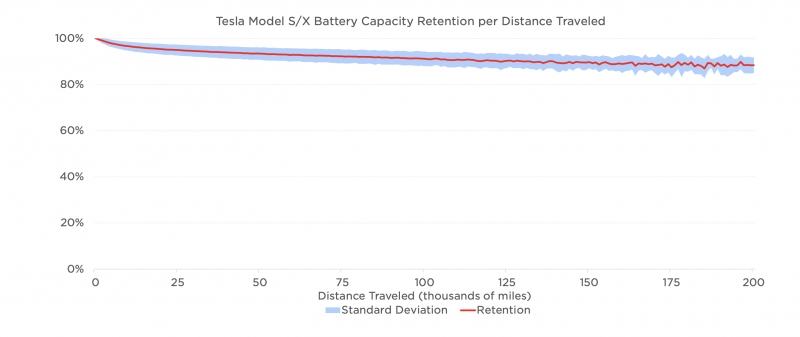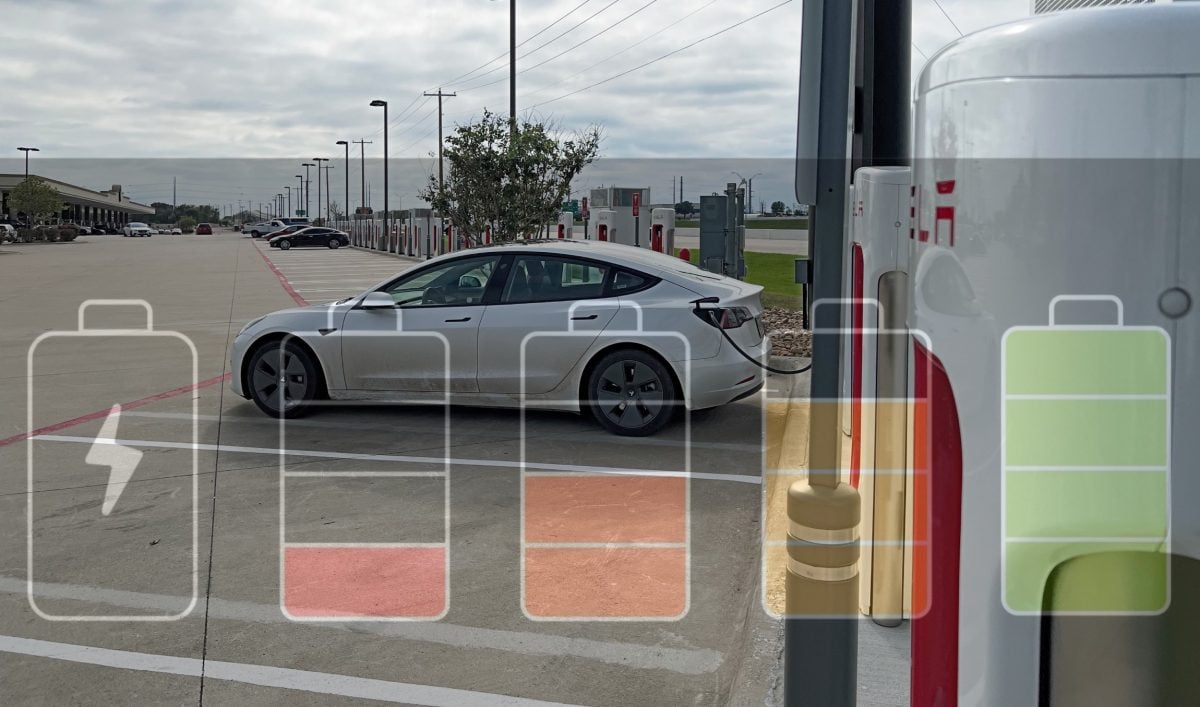Electric car batteries, like all lithium batteries, lose capacity over time. Everyone knows this fact from owning electronic devices such as mobile phones and laptop computers. There are many misconceptions and concerns among EV skeptics that batteries degrade quickly, requiring expensive repairs and replacement costs. If drivers had to replace their EV batteries as frequently as their phone batteries, that would be a big problem.
Large Fleet Data
Although electric cars have gone mainstream relatively recently, there is some published data from the Tesla fleet of cars that should help calm some rapid degradation concerns. Tesla’s Impact report claims that their Model S and X vehicles are retaining approximately 90% of their usable capacity after traveling 200,000 miles.

Considering that an average personal car travels that distance over its lifetime, this means batteries are likely to outlast the rest of the electric vehicle in most cases. With gasoline internal combustion cars typically reaching their end-of-life when expensive engine or transmission repairs are required, it is reasonable to think that the simplicity of electric drivetrain will allow most EVs to have longer useful lives beyond 200,000 miles.
Capacity Degradation is Not Linear
What else can we infer from Tesla’s chart? The degradation curve is steeper in the first 50,000 miles, and plateaus for the next 150,000 miles. So we would urge EV drivers not to panic if they notice range estimates falling in their first two years of ownership because the degradation process is not going to be linear.
What About Battery Load Cycles?
Here is another way to look at degradation: Batteries in consumer electronics typically maintain the majority of their useful capacity for 1,000 cycles before the performance begins to fade. With a mobile phone that depletes an entire battery cycle on a daily basis, you’re looking at approximately three years of service before requiring a replacement. An electric car, on the other hand, is not going through a full cycle daily. Even with a conservative range of 200 miles per battery cycle, 1,000 cycles means racking up 200,000 miles on the odometer.
But an electric car battery is also more sophisticated than a small battery in a mobile phone. Batteries are temperature sensitive and degrade faster in extreme temperatures. The electric car has a battery management system (BMS) with thermal management that can cool and heat the pack as needed to prevent early degradation. We can therefore expect an EV car battery to serve for far more than 1,000 cycles. If Tesla’s Impact report is believed, upwards of 4,000 cycles is possible.
Don’t Worry, Just Drive
So should you be worried about EV battery degradation? It’s fair to say that the earliest EVs on the road from a decade ago have not aged well. There are reports of mid-2010s Kia Souls and e-Golfs with severely degraded batteries. However, many lessons have been learned, and battery management technology has evolved since then. Modern EVs are able to heat and cool their cells to optimize performance and longevity. EV batteries are also backed by generous manufacturer warranties that are similar to drivetrain warrantied on internal combustion engine cars. So we have reached a point when battery degradation is not as big of a concern as in the past. The battery is likely to outlast the car, and may even have a useful life for grid energy storage after the car is scrapped.
Losing the 10% EV range may sound serious on the surface. But it’s also realistic to expect a 10% reduction in the efficiency of a gasoline internal combustion engine after 200,000 miles.
Considering buying a Tesla? Use our referral link to get $1,000 off, and help support our content.
